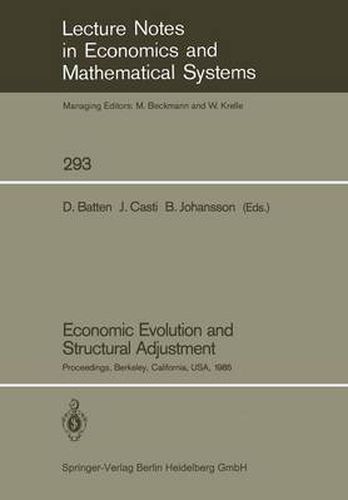Readings Newsletter
Become a Readings Member to make your shopping experience even easier.
Sign in or sign up for free!
You’re not far away from qualifying for FREE standard shipping within Australia
You’ve qualified for FREE standard shipping within Australia
The cart is loading…






This title is printed to order. This book may have been self-published. If so, we cannot guarantee the quality of the content. In the main most books will have gone through the editing process however some may not. We therefore suggest that you be aware of this before ordering this book. If in doubt check either the author or publisher’s details as we are unable to accept any returns unless they are faulty. Please contact us if you have any questions.
Since the beginning of the fifties, the ruling paradigm in the discipline of economics has been that of a competitive general equilibrium. Associated dynamic analyses have therefore been preoccupied with the stability of this equilibrium state, corresponding simply to studies of comparative statics. The need to permeate the boundaries of this paradigm in order to open up new pathways for genuine dynamic analysis is now pressing. The contributions contained in this volume spring from this very ambition. A growing circle of economists have recently been inspired by two distinct but complementary sources: (i) the pathbreaking work of Joseph Schumpeter, and (ii) recent contributions to physics, chemistry and theoretical biology. It turns out that problems which are firmly rooted in the economic discipline, such as innovation, technological change, business cycles and economic development, contain many clear parallels with phenomena from the natural sciences such as the slaving principle, adiabatic elimination and self-organization. In such dynamic worlds, adjustment processes and adaptive behaviour are modelled with the aid of the mathematical theory of nonlinear dynamical systems. The dynamics is defined for a much wider set of conditions or states than simply a set of competitive equilibria. A common objective is to study and classify ways in which the qualitative properties of each system change as the parameters describing the system vary.
$9.00 standard shipping within Australia
FREE standard shipping within Australia for orders over $100.00
Express & International shipping calculated at checkout
This title is printed to order. This book may have been self-published. If so, we cannot guarantee the quality of the content. In the main most books will have gone through the editing process however some may not. We therefore suggest that you be aware of this before ordering this book. If in doubt check either the author or publisher’s details as we are unable to accept any returns unless they are faulty. Please contact us if you have any questions.
Since the beginning of the fifties, the ruling paradigm in the discipline of economics has been that of a competitive general equilibrium. Associated dynamic analyses have therefore been preoccupied with the stability of this equilibrium state, corresponding simply to studies of comparative statics. The need to permeate the boundaries of this paradigm in order to open up new pathways for genuine dynamic analysis is now pressing. The contributions contained in this volume spring from this very ambition. A growing circle of economists have recently been inspired by two distinct but complementary sources: (i) the pathbreaking work of Joseph Schumpeter, and (ii) recent contributions to physics, chemistry and theoretical biology. It turns out that problems which are firmly rooted in the economic discipline, such as innovation, technological change, business cycles and economic development, contain many clear parallels with phenomena from the natural sciences such as the slaving principle, adiabatic elimination and self-organization. In such dynamic worlds, adjustment processes and adaptive behaviour are modelled with the aid of the mathematical theory of nonlinear dynamical systems. The dynamics is defined for a much wider set of conditions or states than simply a set of competitive equilibria. A common objective is to study and classify ways in which the qualitative properties of each system change as the parameters describing the system vary.